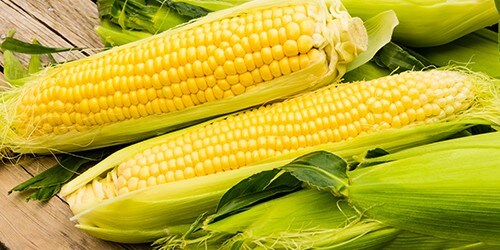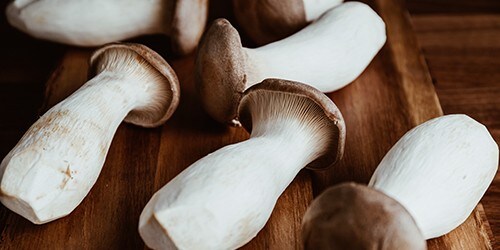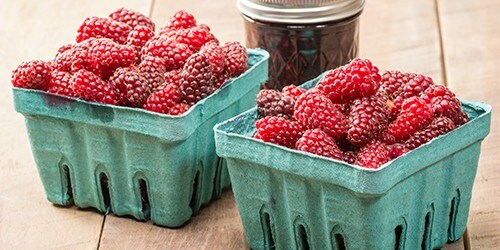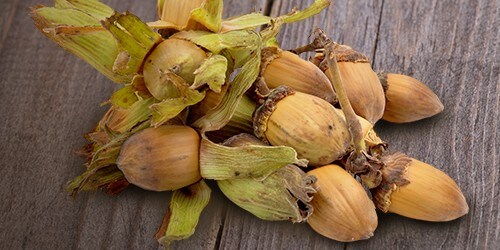
Seasonal in August
British Produce


Imported Produce


Vegetables, Fruit and Nuts
Vegetables

SWEETCORN:
At its best: All year round
Sweetcorn, like its name, is very sweet, soft, and buttery - which you can boil, steam, microwave, roast, or BBQ. It’s a perfect summer side dish that works well in salads or barbecued to go with the rest of your platter.
Chef Suggestions: For a tasteful dish try sweetcorn fritters mixed with chilli, lime, and coriander.
We recommend: When preparing sweetcorn, you can grill or roast it straight from the cob for a traditional garnish to your dish. We also recommend using the kernels through a compound salad or pureeing to be used as a garnish. Alternatively, use it as a base for a delicate sweetcorn soup.
Flavour pairings: Chicken, butter, chilli, and chicken.

KING OYSTER MUSHROOM:
At its best: May to October
These mushrooms can be prepared in a variety of ways and have a nutty, woody, and earthy flavour. King oyster mushrooms are a great vegetarian or vegan alternative to meat because of their firm texture and mild fishy flavour. They taste great when roasted, stir-fried, pan-seared, or grilled. Their flavours and aromas are released when cooked in oil or fat.
Chef Suggestions: King oyster mushrooms are great when simply sauteed in butter, garlic, and parsley. Great as a garnish, paired classically with pasta and risotto.
We recommend: Utilise king oyster mushrooms in plant-based dishes as a tasty meat alternative.
Flavour pairings: Cheeses, rosemary, thyme, chicken, guinea fowl, beef, egg, bacon, pancetta, tarragon, apricot, and garlic.
Fruit and Nuts

Damsons:
At its best: August and September
Damsons are small, dark purple fruits that belong to the plum family. They have a distinctive tart flavour that is both sweet and sour, with a slightly sharp finish. While damsons can be eaten raw, they are often used in cooking and are great for jams, jellies, and fruit sauces. They make a flavourful addition to pies, crumbles, and other baked goods.
Chef Suggestions: Damsons can be cooked in various ways to enhance their sweet-tart flavour. To prepare damsons, wash and pit the fruit, then simmer them in a saucepan with sugar and water until they break down into a thick, flavourful sauce. Alternatively, you can roast damsons in the oven to achieve a caramelised flavour or cook them alongside other fruits like apples or pears to create a delicious compote. Damsons are also suitable for making alcoholic beverages, such as Damson gin or wine. Be cautious when preparing damsons as the flesh tends to cling to the stone. It’s important to remove it as this can be quite challenging and unpleasant to eat.
We recommend: Using damsons in sweet recipes, such as jams, jellies, pies, crumbles, and cakes. They can be added to savoury dishes, such as sauces, chutneys, and marinades, where their tartness can balance the richness of the dish. Additionally, they can be pickled, roasted, or even used to make a homemade liqueur.
Flavour profile: Strong, tart, and sweet.
Flavour pairings:
- Damsons pair well with warm spices like cinnamon, ginger, and cloves, enhancing their natural spiciness.
- They also pair well with nuts like almonds, hazelnuts, and pecans, as well as with other fruits like apples, pears, and berries.
- In savoury dishes, they are a great match for roasted meats like pork, providing a tangy sweetness to the dish.

Tayberries:
At its best: July and August
The tayberry is a cone-shaped fruit, up to 4cm long, with a strong aromatic flavour and less acidity than the loganberry, which it resembles due to its shared parentage. Tayberries are soft when ripe and require hand-harvesting, which is why they're not commonly found in commercial settings. When picked, they typically retain their inner core.
Chef Suggestions: To enjoy tayberries, it's best to savour their flavour raw. If they're very soft, you can mash them with sugar and serve as a sauce or spread over ice cream, scones, waffles, pancakes, or pikelets. They also make excellent jam and can be combined with other fruits, such as apples, in pies. Another option is to macerate tayberries in cider vinegar, vodka, gin, or brandy. Simply place the whole fruit in a sealed container with the liquid and let it macerate for several weeks in a cool, dark place. Once the desired flavour is achieved, strain the mixture through fine muslin, adding a touch of sugar if desired. For added flavour, you can also add orange zest without any pith to the maceration process. Repeat the process if a stronger flavour is desired. Tayberry wine is another excellent option.
We recommend: Any tayberries available commercially might have been picked under-ripe. Therefore, growing tayberries yourself is the best way to fully enjoy their flavour. It's best to minimise storage, but refrigeration can be helpful for storing berries. When storing them, it's important to layer rather than piling them on top of each other. If you stack them too high, the weight of the berries can cause them to become mushy and lose their delicate texture.
Flavour profile: Sweet and tart
Flavour pairings: Cream, custard, lemon, almonds, dark chocolate, berries, cheese, oats, and yoghurt.

Cobnuts:
At its best: August – October
Cobnuts are a type of hazelnut grown in the UK. Their key difference is that they are picked when the outer husk is still green, making them fresher compared to regular hazelnuts which are semi-dried and have a different texture and flavour profile. Cobnuts are harvested between mid-August and October, and they have a unique green husk covering the shell. The nuts themselves are medium-sized and oval, offering a mild sweetness and a satisfying crunch. Cobnuts can be enjoyed in various ways, including snacking, adding to salads, or incorporating them into baked goods. However, they are pricier than other hazelnuts, typically costing around twice as much.
Chef Suggestions: When still young and their shells are green, they are best enjoyed fresh from the shell. However, as they mature, it is recommended to use them in the same way as regular hazelnuts. Cobnuts can be added to salads, streusel toppings, or fruit crumbles. They can replace pine nuts in pesto or almonds in macarons. They can even be used to sprinkle into meringue mixtures for desserts.
We recommend: Kent has a strong history of producing fantastic Cobnuts, making it a great source. It's best to prepare cobnuts just before using them as they can go stale very quickly. For roasted nuts, place them on a baking sheet and bake at around 150°C for up to an hour, checking frequently to avoid burning.
Flavour profile: The flavour and aroma of fresh cobnuts are similar to coconuts – green, yet nutty. Raw cobnuts also have a somewhat fruity citrus note to them, accompanied by a subtle acidity that contributes to their overall flavour profile.
When roasted, the flavour of cobnuts transforms into an earthy profile with hints of caramel, popcorn, and malt, making them a great addition to desserts.
Flavour pairings: Salads, courgettes, blue cheese, goat cheese, plums, squashes, beetroot, brussels sprouts, chocolate, and game.










